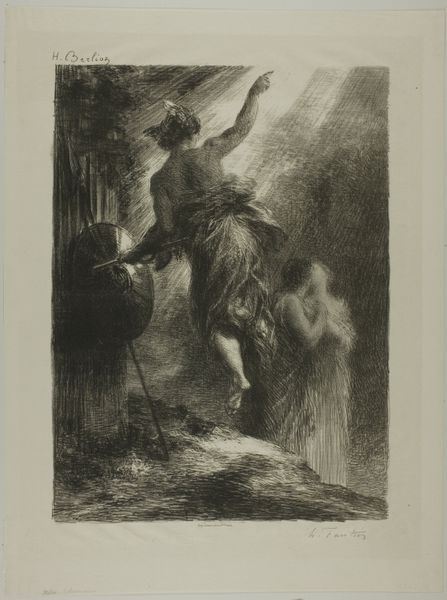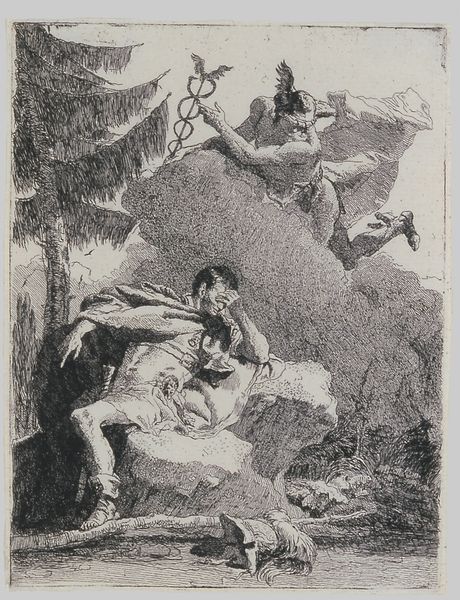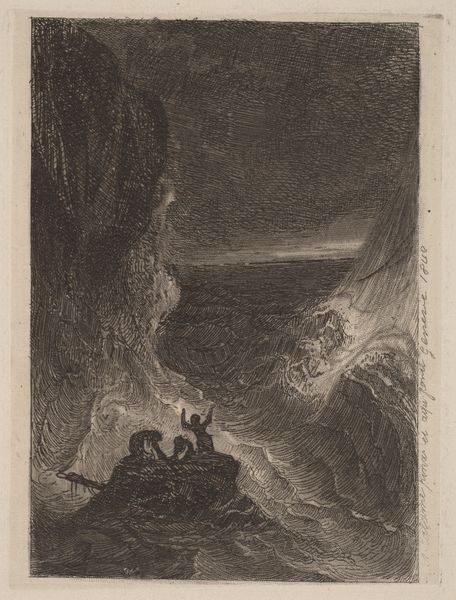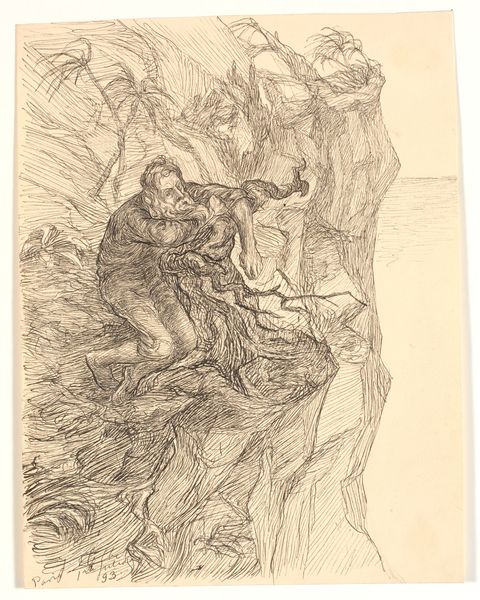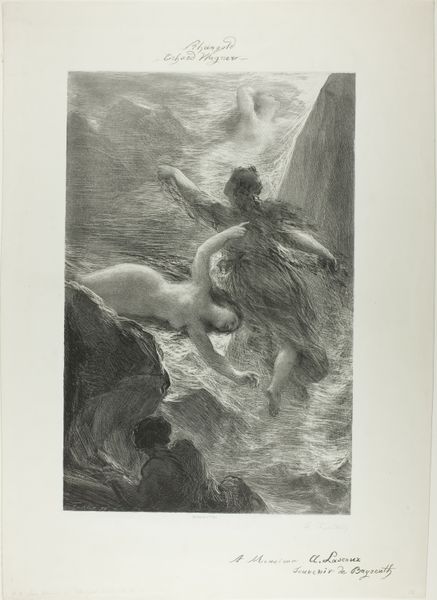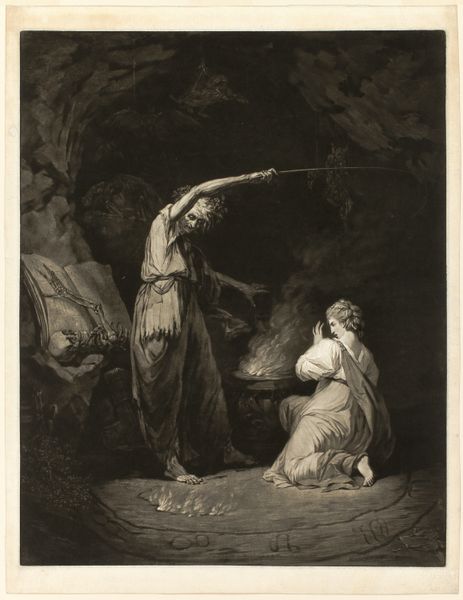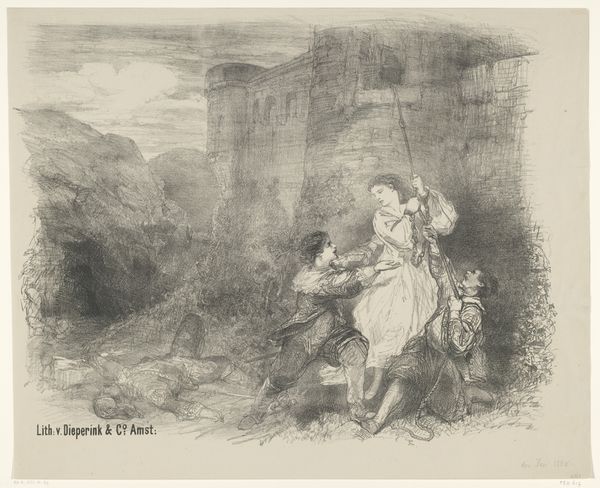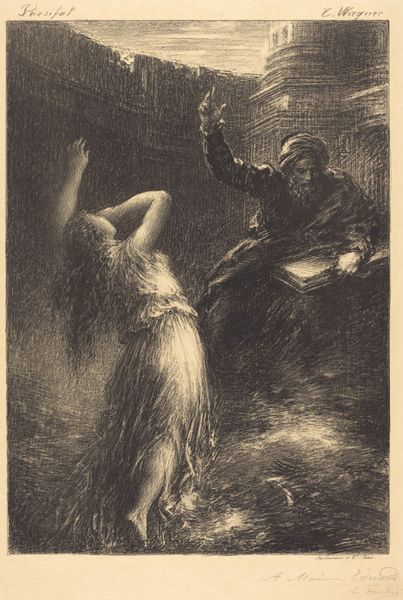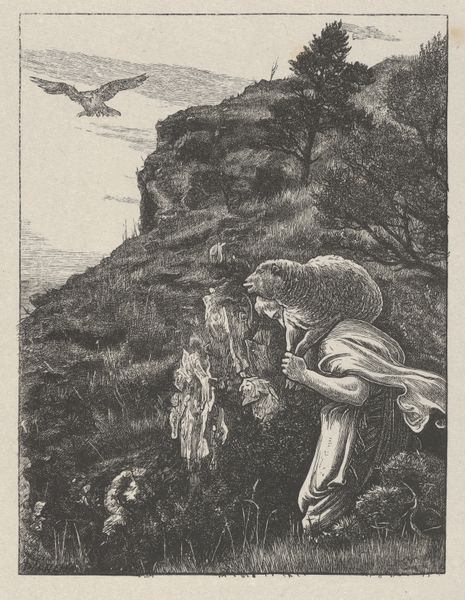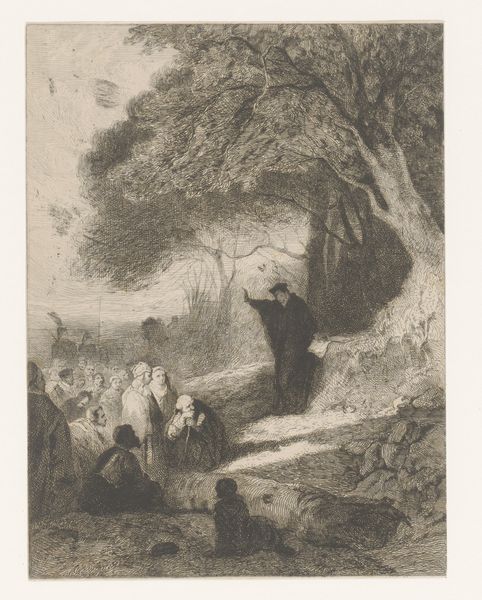
Scene uit het ballet 'Het monster en de Toovenaar' c. 1861 - 1862
0:00
0:00
charlesrochussen
Rijksmuseum
Dimensions: height 750 mm, width 614 mm
Copyright: Rijks Museum: Open Domain
Curator: Standing before us is Charles Rochussen's drawing, "Scene uit het ballet 'Het monster en de Toovenaar'", dating from around 1861-1862. It’s rendered in pencil, a study for a theatrical production. Editor: Immediately, I see this turbulent Romantic drama unfolding, a stark composition of light and shadow, with a kind of gothic tension hovering between the figures. It's reminiscent of fairytale imagery, yet incredibly dark. Curator: It is a masterful example of the artist’s skilled manipulation of a readily available medium. Rochussen has built depth and drama using the very humblest of tools. Editor: Right. But looking closely, the piece screams allegorical intention to me; you have what seems to be a vulnerable child carried by this muscular, dark figure at the top of the rock face, with a suited male figure beneath looking up in alarm. The figure at the cliff’s edge resembles a predatory daemon looming over an unknown space; what sociopolitical anxieties do you imagine are at play in that image? Curator: Considering the prevalence of ballet and theatre productions, alongside developments in accessible and popular modes of print production and consumption at that time, the labor invested in designing a single, captivating image from the stage translates across Rochussen's work into the viewer's home. It suggests both democratization and class separation depending on if it became something readily accessible. Editor: I'm intrigued by the romantic period interest in fantasy, and narratives such as these seem ripe with symbolic representation, like a struggle between the rational, clothed man in the lower left, contrasted by the brute force represented by the ‘monster’ hovering over him. How does that translate through gender and race? Who has the ‘power’ in the picture? The figure who hovers up above appears non-white. How can we investigate its presence in relation to colonial expansion and dominance in Dutch culture at the time? Curator: Fascinating. It truly showcases the dynamism achievable through accessible drawing techniques in visualizing the romantic theatrical production, no matter who its patron might be. Editor: It invites a wider range of complex associations on labor and visibility, touching on narratives from colonization, the power of spectacle, and human anxieties during times of tumultuous societal shifts.
Comments
No comments
Be the first to comment and join the conversation on the ultimate creative platform.

